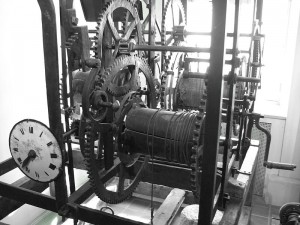 If your goal is to write a pageturner, you want to create a story with compelling scenes – scenes crackling with the sort of action that compels a reader’s attention.
If your goal is to write a pageturner, you want to create a story with compelling scenes – scenes crackling with the sort of action that compels a reader’s attention.
Readers are hungry for plausible stories about people who do amazing things. However, note the “plausible.” The action of the novel, no matter how over the top, must be credible.
Hmmm, you say, are the action scenes in the Harry Potter, James Bond, and Twilight books by any stretch of the imagination credible?
And the answer is: absolutely, yes – within the story logic created by the author. The heroes and heroines of pageturner novels do amazing things few of us will ever experience – but their experiences are credible because their authors have fashioned their characters in such a way as to make their actions plausible. Of course, Harry Potter can fly a broomstick. Harry Potter is a wizard. Of course, James Bond can escape certain death umpteen times. James Bond is a Superspy. Of course Edward literally sparkles and can read minds. Edward is a vampire with an unbeating heart of gold.
The basic idea in fashioning a pageturner is: Decide on the five, eight or ten, key amazing, awesome scenes you want to emply to make make your plot sparkle and shine. Then fashion characters who are the kinds of people who can make those things happen.
If you want a character who becomes a fierce warrior, like Katniss in the Hunger Games, you have to establish tht she has that potential in the opening pages. So, from the start, the author of The Hunger Games presents us with a heroine who is a fearless hunter with quick reflexes. She also provides Katniss with the emotional motivation that will spur her to perform to her utmost as a firece warrior: she shows us how deeply Katniss cares for Prim, her younger sister.
In Gone with the Wind, Margaret Mitchell wants the reader to believe Scarlett is going to chase after Ashley, her romantic target, for 500 pages, so she shows us Scarlett passionately – and scandalously – throwing herself at Ashley in the opening scenes of the novel.
As you plan your pageturner, ask yourself: what kind of hero is the best choice for my story?
You can’t be whimsical. You can’t show us a dreamy timid passive heroine who has no exceptional skills – or who doesn’t especially care for her younger sibling – and expect us to believe she’ll fight valiantly in the Hunger Games. You can’t show us a shy and retiring Scarlett and expect us to believe she’ll pursue Ashley tooth and claw, and scrap for her own survival as aggressively.
If you’re baking a carrot cake, you have to put the carrot in!
So your goal is to,
1) fashion an interesting story – that means when you are planning the big action scenes in your story, you want to create and present new and interesting situations versus same old same old. But – again – your fictional characters must behave credibly. You need to give your hero plausible reasons for the choices he or she makes.
2) create credible characters to make that story happen – you need to: create a hero who can function the way you need him to in the story environment you intend to create.
Some examples:
- If you need a character who risks his life to save a bunch of hostages from terrorists, you need a character who has the background to outsmart a bunch of terrorists, and then you give him reasons to hang in there and outsmart them. I give you . . . Diehard. (Bruce Willis is a tough smart cop and his wife has been taken hostage by terrorists.)
- If you need a detective who can spot tiny clues everyone else misses, you create Monk with his photographic memory and his OCD. His reason for pursuing the bad guys? He needs to make a living, and reinstate himself as a detective. He was drummed out after he had a breakdown when his wife was murdered. Aside from his love for his wife, his job as a detective means more than anything else to him.
- If you need a Katniss, you give her archery skills and a rule-breaking disregard for totalitarian authority.
If you need a scene in which the heroine drives a Zamboni, establish that your heroine held a summer job in college driving a Zamboni. If you need a scene in which someone sails a boat across a stormy sea, give your hero a childhood of sailing every summer with his dad.
That’s how you make the magic of compelling scenes happen: decide on the action of those scenes, then create characters who have the background to make it seem perfectly natural that they can do what you need them to do.
Happy writing!



